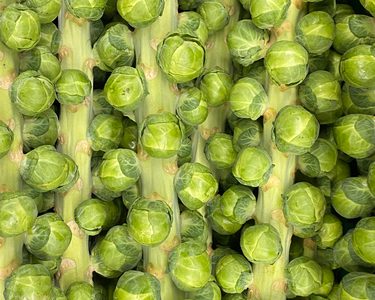Have a merry waste-free Christmas

For many households, Christmas is a time when more waste than usual is produced. And the first big outlay is the Christmas tree.
If you already have an artificial Christmas tree, it’s best to keep on using it. You need to use it for 10 to 15 years for it to be a more sustainable option than a real Christmas tree.
If you’re buying a cut tree, make sure you purchase a locally produced tree to support a local grower, especially if their trees are part of a sustainable cropping system. Buying imported trees involves a larger carbon footprint and it’s harder to certify their sustainability.
You can also rent trees in some areas, such as via the Lake District Eco Christmas Trees - and after Christmas, return the tree where it will be grown on and cared for until the following year. For something more original, make your own alternative Christmas tree out of recycled and reclaimed material, or decorate some branches in a vase with baubles and Christmas lights.
Sustainable ways to dispose of a Christmas tree
If you do buy a cut tree to decorate your house over Christmas, consider how you might best dispose of it.
- You can compost your Christmas tree, but it will need to be shredded or cut up into small pieces as they take a very long time to break down. Because the material of your tree is woody, you will need to add a lot of nitrogen-rich material to your heap at the same time such as fruit and vegetable scraps.
- Consider chopping the tree up into smaller pieces and making a habitat pile in the corner of your garden - it will eventually break down and provide a home for wildlife while it’s doing so. A bug snug will make use of branches and other tough organic matter that you would otherwise throw away. You can tie three poles together to make a teepee structure, then layer your sticks so that they fit snuggly in between the poles. These will slowly compost over time to offer valuable shelter for beneficial creatures.
- Evergreen needles from your tree can be piled up and eventually used as an acidic leafmould for ericaceous plants such as camelias and blueberries.
- Find out if there are any charity Christmas tree recycling schemes in your area. Your Christmas tree will be collected and composted in exchange for a small donation to the charity, which means that you’re supporting good causes as well as recycling your tree.
Eco-friendly festive feasts
Save money and food by trying to plan your meals, and buy for the right amount of people. Don't prepare for the 400 if you're only catering for four! If you have leftovers, consider meals that you can make over the following days…or get composting.
- Compost all those veg peelings, fruit scraps and inedible leftovers. These are usually high in nitrogen and a fantastic ‘green’ compost ingredient. Make sure you mix them with plenty of carbon rich ‘brown’ material like woody prunings or dead plant material. Cardboard packaging or scrunched up paper can make an excellent alternative if you don’t have sufficient ‘browns’ from your garden.
- Composting the stalks or stems of your sprouts after Christmas can be tricky as they are very tough and will take a while to break down in your compost bin if you put them in whole. Bashing or crushing them first will increase the surface area and allow the compost creatures to access their softer centre, which will help them to decompose quicker. If you break up the stem a little before adding to the compost bin, it can become a great air chimney for your compost as the middle will break down faster than the outside. You can also bury them in compost trenches in the ground. Find out more here.
- Avoid putting any cooked food, meat, fish or dairy scraps into your compost bin unless you have a specialist bin designed for this type of waste.
- As the temperatures drop, the composting process will slow down significantly but you can still keep going during the colder weather. Find more winter composting tips here.

Recyclable wreathes, wrapping and cards
Choose Christmas wreaths made from natural materials, or better still, make your own from locally foraged materials. Willow is a good base material as it can be bent into shape and there are lots of lovely evergreens and berries around at this time of year. At the end of the Christmas season you can compost the whole thing. Chop it up first to help it break down more quickly and remember to remove any non-compostable elements such as plastic ties.
It's easier to find wrapping paper without plastic packaging these days. Look out for the label indicating that it’s recyclable. Brown paper is a good choice, preferably recycled. Ensure it has a matte finish and no glitter or foil so it can be composted. Even better, re-use and recycle paper if you can. Scrunched up wrapping paper makes a great 'brown' addition to your compost bin to balance out all those 'green' veg peelings left over from your Christmas dinner.
Consider wrapping gifts with natural string or twine instead of sticky tape. Sticky tape can’t be recycled but natural twine can be reused – especially in the garden, plus it gives your presents that extra homemade charm.
Eco-conscious cards and crackers
Together we send and receive up to one billion Christmas cards each year. So, this year, why not try something different. Pick up the phone, send an e-card, donate to charity or send a plantable seed card.
If you do decide to send Christmas cards this year, choose ones made from recycled paper that are not coated in materials such as foil, plastic or glitter. This will ensure they are fully recyclable and/or compostable. You could also re-use the cards sent to you by making them into gift tags for next year. Make your own paper Christmas crackers and pop sweets and treats in the centre.
We wish you have a very merry and green Christmas!